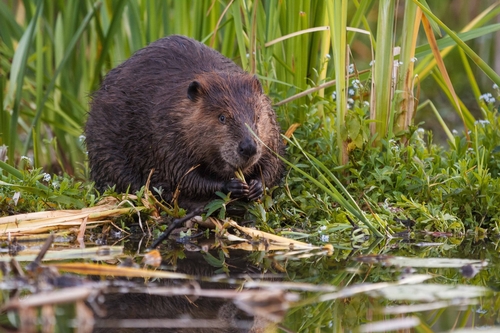
North American Beaver
The North American beaver, with its iconic flat tail and masterful dam-building, transforms waterways into lush habitats. These industrious rodents are crucial ecosystem engineers, fostering biodiversity in freshwater environments with their wetland creations.
10-12 years
Lifespan
Least Concern
Conservation Status
Stable
Population Trend
Distribution Range of the North American Beaver
Castor canadensis, commonly known as the North American beaver, is native to North America. Its geographical distribution includes much of Canada, the United States, and parts of northern Mexico.
North American Beaver's Habitat
Environmental Conditions
North American beavers typically inhabit freshwater environments, such as rivers, streams, ponds, and lakes. They prefer areas with a steady water supply and abundant woody vegetation.
Ecological Niche
Beavers are primarily known as ecosystem engineers. They build dams using sticks, mud, and rocks to create ponds, which provide them with protection from predators and access to food during winter. Their constructions can significantly alter local ecosystems, creating wetlands that benefit a variety of other species. Beavers prefer temperate to boreal zones, and while they can adapt to a range of environments, they thrive in regions where they can find abundant deciduous trees such as cottonwood, aspen, willow, and birch.
Copyright @ Nature Style Limited. All Rights Reserved.
 English
English